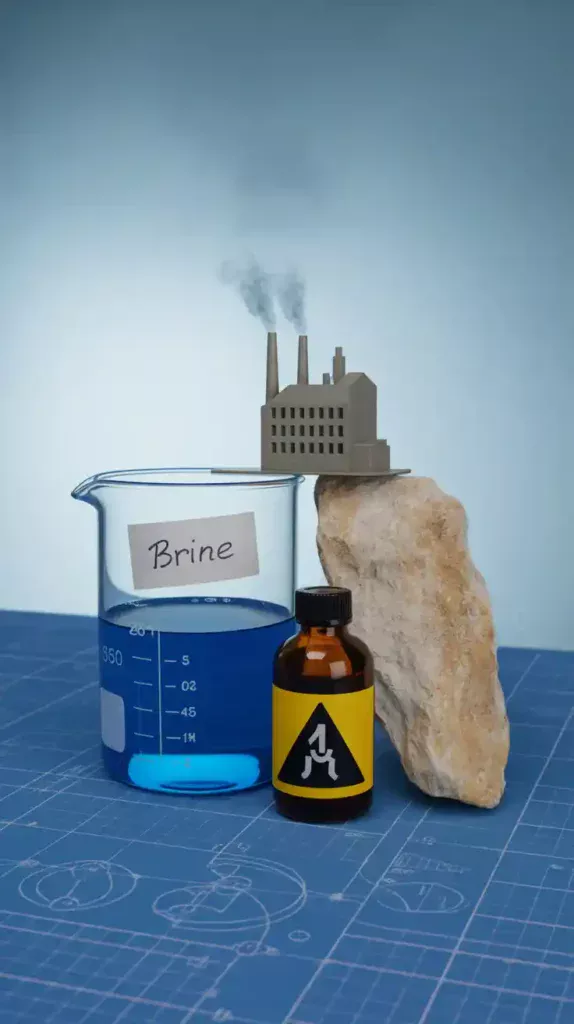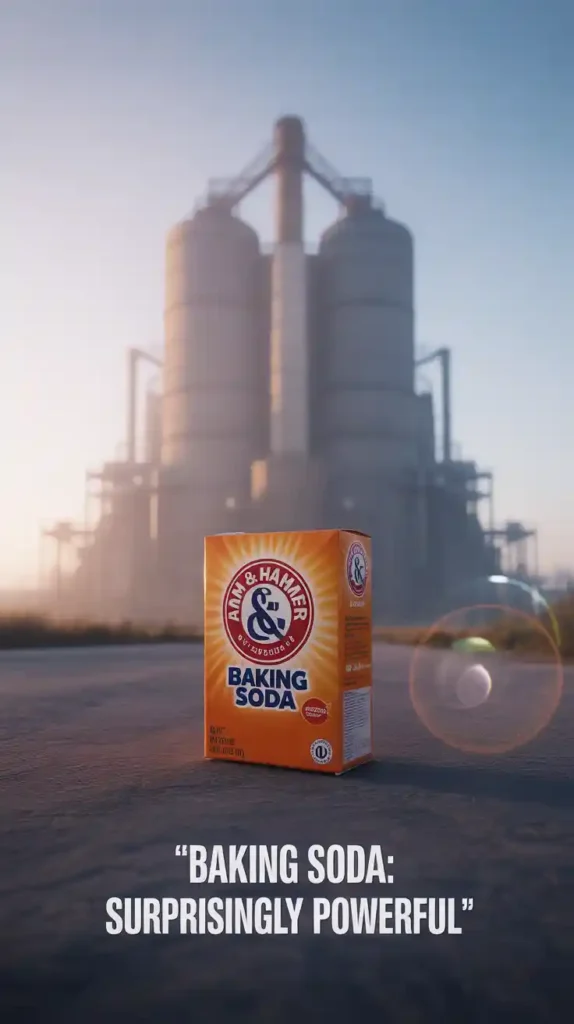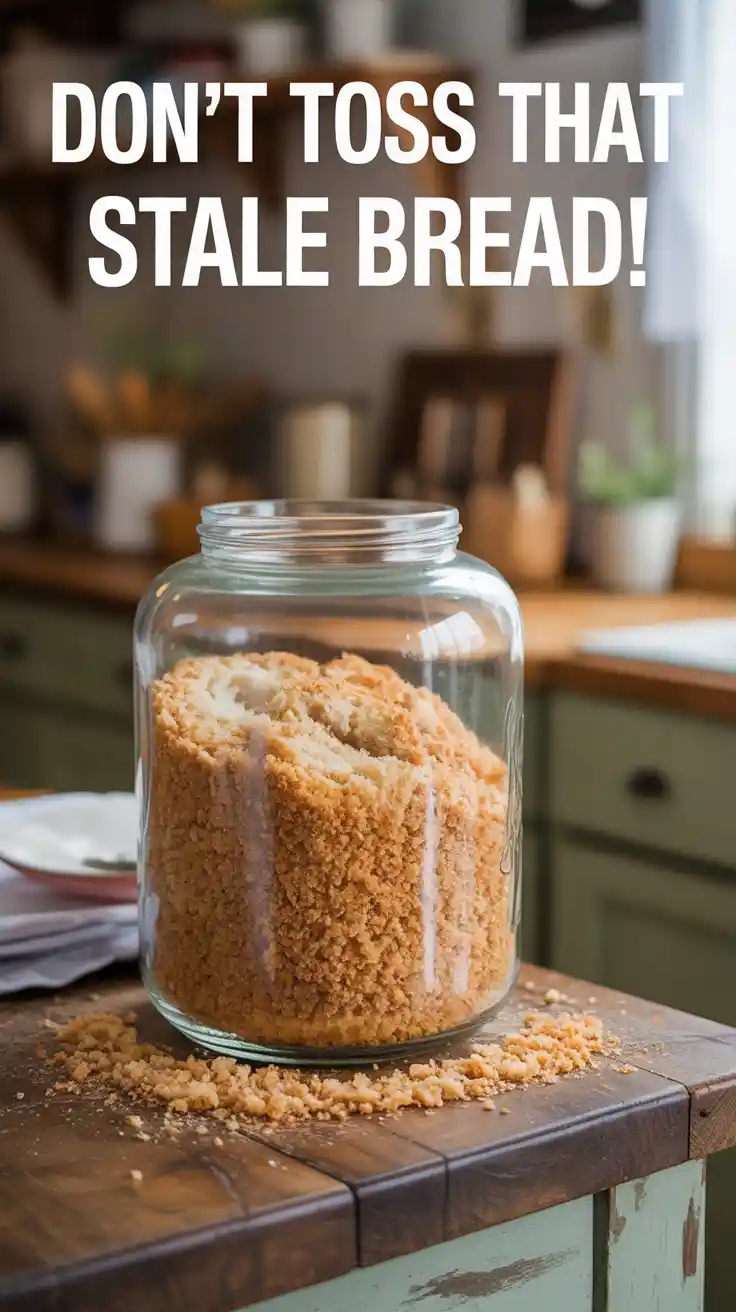The “Please Don’t Try This at Home” Guide to Making Baking Soda
So, you’ve found yourself in a particular brand of DIY rabbit hole. You’re churning your own butter, you’re contemplating grinding your own flour, and now you’ve arrived at the final frontier of pantry staples. You’re wondering how to make baking soda. I have to say, I admire your ambition. It’s the kind of plucky, can-do spirit that built civilizations. It’s also completely bonkers.
Before you start raiding your cleaning supplies and trying to remember your high school chemistry class, let’s take a little journey together. We are going to follow the “recipe” for making baking soda. Spoilers: it’s less “cozy kitchen” and more “industrial chemical plant.” But understanding the process will give you a profound, newfound appreciation for that humble, inexpensive little orange box in your pantry. Shall we begin?
Why This “Recipe” is Awesome
Why would you possibly want to learn about a recipe you should never, ever actually make?
- It Will Make You Sound Incredibly Smart: The next time someone at a party asks for a fun fact, you can casually explain the intricacies of the Solvay process. You will instantly become the most interesting (or most nerdy) person in the room.
- You’ll Gain a Newfound Appreciation for Science: This isn’t just baking; it’s a beautiful, large-scale chemical reaction. Understanding it is a fantastic reminder of the incredible science that goes into our everyday lives.
- You Will Never Complain About the Price of Baking Soda Again: When you realize the sheer industrial might required to produce this stuff, you will look at that $1 box on the grocery store shelf and see it for what it is: an absolute bargain and a modern miracle.
The “Ingredients” (Your Shopping List Might Be Tricky)
To get started on our little home project, you’ll just need to pop down to the store and pick up a few simple things.
- A Vast Supply of Saltwater (Brine): Ideally pumped from a large, underground salt deposit. Your fancy pink Himalayan sea salt isn’t going to cut it here; we need industrial quantities.
- A Massive Limestone Quarry: You’ll need a good source of calcium carbonate (CaCO3). That little chalky antacid tablet in your medicine cabinet is a start, but we’re going to need a few metric tons.
- Ammonia (NH3): Yes, the pungent chemical. You’ll need a lot of it.
- A Carbonating Tower: A multi-story piece of industrial equipment. You can probably find one on Amazon, right?
- A Coke Furnace: Not for soda, darling. This is for burning carbon to produce carbon dioxide.
Tools & Kitchen Gadgets: Your Home Chemistry Lab
Every recipe needs the right tools. For this one, your stand mixer can probably sit this out.
- An Industrial Kiln: To heat your limestone to about 1000°C. Your oven’s “self-clean” cycle, while hot, is not quite up to the task.
- An Ammonia Absorber and a series of Purification Tanks.
- An Industrial-Grade Vacuum Filter and a Centrifuge: To separate and dry your final product.
- A Team of Highly-Trained Chemical Engineers: Optional, but highly recommended for not causing a city-wide evacuation.
Step-by-Step Instructions: The Solvay Process (in a Nutshell)
Ready to cook? Put on your safety goggles.
Step 1: Prepare Your Gases
First things first, you need to make your own carbon dioxide. Simply take a few tons of that limestone you quarried and heat it in your kiln to about 1000°C. This will break it down into calcium oxide (quicklime) and a whole lot of lovely carbon dioxide gas. Capture that gas. Don’t let it escape.
Step 2: Ammoniate Your Brine
Take your industrial quantity of saltwater and saturate it with your ammonia. This is done in an absorber tower. The purpose of this is to make the brine alkaline. It’s a crucial step.
Step 3: The Carbonating Tower
Now for the main event. Pump your ammoniated brine down through your carbonating tower. At the same time, pump the carbon dioxide gas you made in Step 1 up through the tower. A beautiful chemical reaction will occur, causing a solid precipitate of sodium bicarbonate (that’s your baking soda!) to form.
Step 4: Separate and Filter
You now have a slurry of baking soda and ammonium chloride. Easy peasy. Just run this mixture through your industrial vacuum filter or centrifuge to separate the solid baking soda from the liquid.
Step 5: The Final “Bake”
The raw baking soda you’ve collected needs to be purified. Heat it gently to break down any remaining impurities and release some trapped gases. Let it cool. Congratulations! You now have a few tons of pure, homemade baking soda. Now you just need to figure out where to store it.
“Nutritional Info”
- Serving Size: One metric ton.
- Calories: 0.
- Recommended Daily Intake: Do not consume your industrial chemical products.
- Pairs Well With: A profound sense of accomplishment and a healthy respect for chemistry.
Common Mistakes to Avoid (Please Read This Section)
- Attempting This in Your Kitchen: I feel like this should be obvious, but I’m going to say it in bold. This is a large-scale industrial chemical process. This is not a recipe you can or should ever attempt to do at home. It is dangerous and involves hazardous materials.
- Thinking This is a Cost-Saving Measure: That box of Arm & Hammer is about a dollar. The industrial plant required to make your own will cost you several million. The math just doesn’t check out.
- Inhaling the Ammonia: It’s generally frowned upon by medical professionals and your respiratory system.
Variations & Customizations (Things You CAN Actually Make!)
Okay, now that we’ve had our fun, let’s talk about some actual kitchen science you can do with the baking soda you bought from the store.
1. The Super-Powered Cleaner: “Making” Washing Soda
This is a real, useful, and safe chemical transformation you can do in your oven!
- Spread a thin layer of regular baking soda (NaHCO3) on a baking sheet.
- Bake it in your oven at 400°F (200°C) for about an hour.
- The heat will cause a chemical reaction that drives off water and carbon dioxide, turning the sodium bicarbonate into sodium carbonate (Na2CO3), also known as washing soda. It will lose its fluffiness and become more grainy. This is a fantastic, heavy-duty, all-natural cleaner!
2. The Pantry Staple: Making Your Own Baking Powder
Ever run out of baking powder mid-recipe? You can make your own! Baking powder is just baking soda mixed with a dry acid. For a simple single-acting baking powder, just whisk together one part baking soda with two parts cream of tartar.
FAQ: Your Most Pressing Chemical Questions
Okay, seriously. Can I actually make baking soda at home?
No. For all the reasons listed above, making pure sodium bicarbonate from scratch is not a feasible, safe, or practical home kitchen project. Please, just buy it at the store.
So, where does the stuff in the box actually come from?
While some baking soda is still made using the Solvay process we jokingly outlined, a huge amount of it, especially in the US, is now mined directly from the earth. It comes from a mineral called trona, which is refined into pure sodium bicarbonate.
What is the difference between baking soda and baking powder?
Baking soda is a pure base (an alkaline). It needs an acid in the recipe (like buttermilk, lemon juice, or vinegar) to react with and create the carbon dioxide that makes your baked goods rise. Baking powder is baking soda that already has a dry acid (like cream of tartar) mixed right in. It’s a “one-stop-shop” for leavening.
And what’s the difference between baking soda and washing soda?
Baking soda is sodium bicarbonate (NaHCO3). It is a mild base, safe to eat. Washing soda is sodium carbonate (Na2CO3). It is a much stronger, more caustic base. It is not safe to eat, but it is a fantastic heavy-duty cleaner and laundry booster.
Final Thoughts
So there you have it! The incredibly simple, not-at-all-dangerous, and totally practical “recipe” for making your own industrial-grade baking soda. Or, you know, you could just save yourself the trouble of building a multi-million dollar chemical plant in your backyard and buy a box for about a dollar. Your choice.
Now, go appreciate that little orange box. It’s been on a much bigger journey than you ever imagined.




